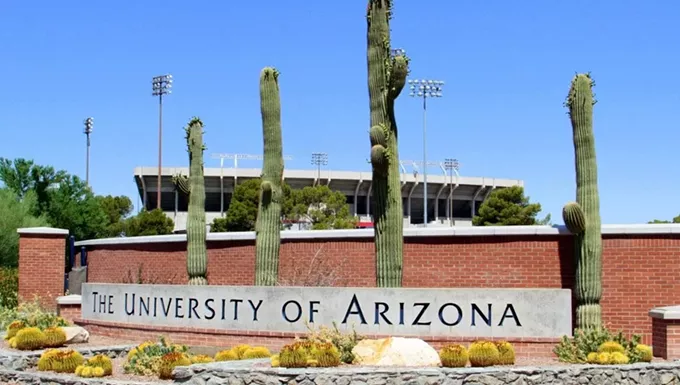As statewide coronavirus data trends upward, the University of Arizona is showing elevated COVID-19 cases compared to recent weeks as it gears up for a pre-fall break testing blitz, UA President Robert C. Robbins shared in a news conference Monday, Nov. 9.
From Oct. 29 through Nov. 7, UA found 71 positive coronavirus cases after administering 8,345 tests for a positivity rate of 0.9%, a slight decrease from the 1.1% rate the university reported the previous 10-day period. Before that, the university reported a 0.6% positivity rate.
In the two weeks before fall break, the university will allow classes of 50 or fewer students to meet in-person, remaining in stage two of its reopening plan. After the break, all classes will be remote until the end of the semester, Robbins said.
Today, the university began its “testing blitz” to reduce the spread of the virus as travel is likely to increase over the holiday season. Until Nov. 15, students are asked to register for an appointment-only test after completing a survey with their traveling plans.
If students travel outside the Tucson area over fall break, the university is asking them to complete the semester outside the area or remotely online. Those who don’t travel can complete the semester from their student residences.
Reentry Task Force Director Richard Carmona went over statewide COVID-19 data that shows a 14-day increase in cases of 68 percent, and a 289 percent increase in deaths throughout Arizona.
Pima County’s COVID-19 cases are also increasing, and Carmona said “from the beginning of October, we were doing pretty well, and all of a sudden we’re on the rise again.”
Pima County’s current R0, pronounced “R naught”—which indicates how contagious a virus is by showing the average number of people who will contract the virus from an infected person—is at 1.69. The transmissibility rate for the zip code surrounding the university has increased from 1.25 to 2.22 this week, according to Carmona.
“This still keeps us up at night, we are still concerned,” Carmona said. “But we are working diligently with the community, students, faculty and staff to adhere to the best public health practices to be able to decrease transmissibility.”
However, Robbins said he’s “encouraged by the improved compliance with public health measures” throughout the past week.
UA’s CART team, a collaboration with the UA and Tucson police departments that looks for noncompliance to COVID-19 precautions, responded to seven incidents since Nov. 2. The week prior, they reported 18 incidents, including seven gatherings with over 100 attendees.
Although the university will remain in remote instruction after fall break, Robbins said it anticipates starting the spring semester in January in stage two, with up to 50 persons attending classes in person. All students who attend classes will be required to get tested for COVID-19.
If public health conditions permit, Robbins said the university could move to stage three of its reentry plan—which allows classes of up to 100—but said this is a “remote possibility, especially since we are anticipating that in January and the winter months across the country, we’re gonna see an increase in the number of cases.”
Both Carmona and Robbins are confident in the university’s mitigation strategies and collaboration with county and statewide entities to decrease the spread of coronavirus.
“We are inextricably tied in this world, so I’m really happy that we understand that as a university,” Carmona said. “We’re contributing as much as we can, not only to make our community safer but our nation and our world safer.”


